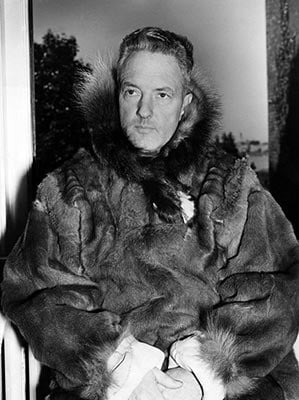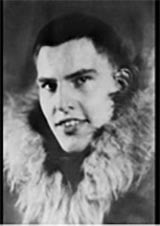And the Brunson gear was ‘the only one that worked’
Rear Adm. Richard Byrd knew how to survive in extreme cold. In 1939, the explorer would set out for his third expedition to the Antarctic. It was his first with U.S. government sponsorship.
The 150 servicemen under his command would load four small aircraft, a massive, 33-ton vehicle called the ‘Snow Cruiser,’ along with dog teams, provisions, tents and cold weather gear aboard two vessels, the USS Bear and North Star. The ships steamed southward out of Boston toward the icy continent 80 years ago today: November 15, 1939.

Rear Admiral Richard E. Byrd set sail for Antarctica on this day in 1939.
These were the dark days before World War II, and Byrd was charged with gaining a permanent foothold on the icy continent, and “Little America,” a group of widespread American encampments, would need to be carefully situated on the ice shelf.
The Germans were also very interested in Antarctica. Under orders from President Roosevelt, the Byrd expedition would require precise surveying equipment—one of its covert missions was to lay a firm basis for future territorial claims.
Brunson Instrument Co.’s founder, A.N. Brunson, sent some equipment too. Rigorously testing machine lubricants in extreme low temperatures, Brunson offered a weather-proofed version of his recently patented dust-proof spindle, and Byrd’s expedition gratefully accepted.
Sixty days later, the expedition arrived in Antarctica. The Snow Cruiser abruptly failed in the cold conditions, and so too did most of the critical surveying equipment. Except for Brunson’s.
We received a telegram from Dr. Paul A. Siple, the expedition’s chief scientist: “Other instruments bound [in the cold] but yours always moved freely.”
Watch the story above, in an excerpt from the documentary “Helping the World Measure: The Brunson Instrument Story.”

Footnote: Dr. Paul A. Siple (above) broke the tedium at the Antarctic outpost with scientific experimentation and came up with the original mathematical models for what we today call Wind Chill Factor.
Learn more about the explorations of Rear Admiral Richard E. Byrd here.
Learn more about the Snow Cruiser here.

